What can cause high fever. Hyperpyrexia: Understanding Causes, Symptoms, and Treatment of Extreme Fevers
What are the main causes of hyperpyrexia. How is hyperpyrexia different from regular fevers. What symptoms indicate a dangerously high fever. How do doctors diagnose and treat hyperpyrexia. When should you seek emergency care for a high fever.
What Is Hyperpyrexia and How Does It Differ from Normal Fevers?
Hyperpyrexia refers to an extremely high fever, typically defined as a body temperature above 106.7°F (41.5°C). Some medical professionals use a slightly lower threshold of 106.1°F (41.1°C). Unlike regular fevers which are usually symptoms of infections, hyperpyrexia can have various underlying causes and requires immediate medical attention.
How does hyperpyrexia differ from a normal fever? In both cases, the brain signals the body to raise its baseline temperature. However, hyperpyrexia represents a dangerous extreme that can quickly lead to life-threatening complications if left untreated. It’s crucial to understand that hyperpyrexia itself is not an illness, but rather a symptom of a serious underlying condition.
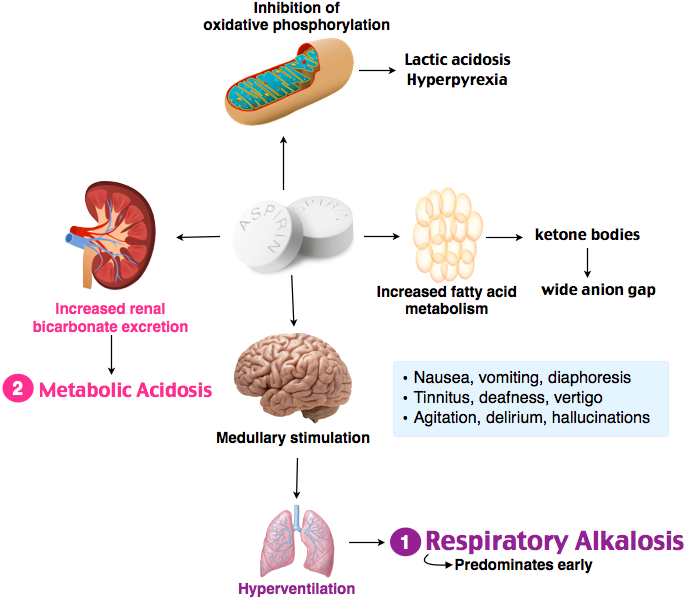
Common Causes of Hyperpyrexia: From Infections to Medical Emergencies
While infections are a frequent culprit behind high fevers, hyperpyrexia can stem from diverse origins:
- Severe viral or bacterial infections
- Intracranial hemorrhage (bleeding in the brain)
- Sepsis (a life-threatening immune response to infection)
- Adverse reactions to general anesthesia
- Kawasaki syndrome (particularly in children)
Why can brain bleeds cause hyperpyrexia? Intracranial hemorrhages can damage the hypothalamus, the brain region responsible for regulating body temperature. This disruption can lead to an uncontrolled spike in body heat.
Hyperpyrexia vs. Hyperthermia: Understanding the Distinction
It’s important to differentiate hyperpyrexia from hyperthermia. While both involve dangerously high body temperatures, the mechanisms differ:
- Hyperpyrexia: The brain actively raises the body’s temperature setpoint
- Hyperthermia: An uncontrolled rise in temperature due to external factors or the body’s inability to dissipate heat (e.g., heatstroke)
Recognizing the Symptoms: Early Warning Signs to Life-Threatening Complications
The symptoms of hyperpyrexia can escalate rapidly as the body temperature rises. Identifying early warning signs is crucial for timely intervention:

Initial Symptoms
- Extreme thirst and sweating
- Dizziness and muscle cramps
- Fatigue and weakness
- Nausea and light-headedness
As the Condition Progresses
- Severe headaches
- Contracted pupils
- Mild confusion
- Pale, moist, and cool skin
- Vomiting and decreased urination
Critical Stage Symptoms
- Extreme confusion or loss of consciousness
- Rapid, shallow breathing
- Dry, hot, and red skin
- Weak, rapid pulse
- Dilated pupils
- Seizures
How quickly can hyperpyrexia become life-threatening? The progression from early symptoms to critical complications can occur within hours, emphasizing the need for immediate medical intervention when body temperature exceeds 106.1°F (41.1°C).
Diagnosing Hyperpyrexia: Beyond the Thermometer
While a temperature reading above 106.1°F (41.1°C) is the primary indicator of hyperpyrexia, medical professionals must conduct a thorough evaluation to determine the underlying cause:
- Detailed medical history
- Physical examination
- Blood tests to check for infections or other abnormalities
- Imaging studies (e.g., CT scans) if neurological causes are suspected
- Toxicology screening in cases of potential drug-related hyperpyrexia
Why is pinpointing the cause of hyperpyrexia crucial? Identifying the underlying condition guides treatment strategies and helps prevent recurrence or complications.

Treatment Approaches: Tackling Both Symptoms and Root Causes
Managing hyperpyrexia requires a two-pronged approach: reducing the dangerously high body temperature while simultaneously addressing the underlying cause. Treatment methods may include:
Immediate Temperature Reduction Techniques
- Cool baths or application of cold, wet sponges
- Intravenous hydration to replenish fluids
- Administration of fever-reducing medications like dantrolene
Treating Underlying Conditions
- Antibiotics for bacterial infections
- Antiviral medications for specific viral causes
- Surgical intervention for intracranial hemorrhage
- Targeted therapies for conditions like Kawasaki syndrome
How do doctors balance immediate fever reduction with long-term treatment? Medical professionals must carefully monitor the patient’s response to cooling methods while investigating and treating the root cause to prevent recurrence.
Special Considerations: Hyperpyrexia in Children and Anesthesia-Related Cases
Certain populations and scenarios require unique approaches when dealing with hyperpyrexia:

Pediatric Hyperpyrexia
Children, especially those with Kawasaki syndrome, may experience hyperpyrexia. Treatment typically involves:
- Careful monitoring of vital signs
- Gentle cooling techniques
- Intravenous immunoglobulin therapy for Kawasaki syndrome
- Close follow-up to prevent complications
Malignant Hyperpyrexia During Anesthesia
This rare but life-threatening condition requires immediate action:
- Discontinuation of triggering anesthetic agents
- Administration of dantrolene to reduce muscle rigidity
- Aggressive cooling measures
- Monitoring for potential organ damage
Why is rapid response crucial in anesthesia-related hyperpyrexia? The sudden onset and potential for rapid deterioration make immediate intervention essential to prevent severe complications or death.
Long-Term Outlook: Recovery and Potential Complications
The prognosis for patients with hyperpyrexia largely depends on the underlying cause and the speed of treatment initiation. Factors influencing recovery include:

- Duration of extreme fever
- Presence of organ damage
- Effectiveness of treatments for the underlying condition
- Age and overall health of the patient
Potential long-term complications of untreated or prolonged hyperpyrexia may include:
- Neurological deficits
- Organ dysfunction
- Cognitive impairments
- Increased susceptibility to future infections
How can the risk of complications be minimized? Early recognition, prompt medical attention, and comprehensive follow-up care are key to improving outcomes and reducing the likelihood of lasting effects.
Prevention Strategies: Minimizing the Risk of Hyperpyrexia
While not all cases of hyperpyrexia can be prevented, certain measures can reduce the risk:
- Prompt treatment of infections and underlying health conditions
- Proper hydration, especially during illness or hot weather
- Monitoring fever progression and seeking medical attention when temperatures rise rapidly
- Awareness of medication side effects that may contribute to fever
- Genetic testing for those with a family history of malignant hyperthermia
How can individuals best prepare for the possibility of hyperpyrexia? Maintaining a working thermometer at home, knowing the signs of dangerously high fever, and having a plan for accessing emergency medical care are crucial steps in preparedness.

Advancements in Hyperpyrexia Research: Future Directions and Potential Breakthroughs
Ongoing research into hyperpyrexia aims to improve diagnosis, treatment, and prevention strategies:
- Development of more targeted fever-reducing medications
- Exploration of novel cooling techniques for rapid temperature reduction
- Investigation into genetic factors that may predispose individuals to extreme fevers
- Improvement of monitoring systems for early detection in hospital settings
- Research into the long-term effects of hyperpyrexia on brain function and overall health
What potential breakthroughs could revolutionize hyperpyrexia management? Advances in personalized medicine may lead to tailored treatments based on an individual’s genetic profile and specific cause of hyperpyrexia, potentially improving outcomes and reducing complications.
As our understanding of hyperpyrexia continues to evolve, healthcare providers and researchers remain committed to enhancing prevention, diagnosis, and treatment strategies. By staying informed about the latest developments and maintaining vigilance in recognizing early warning signs, individuals can play a crucial role in mitigating the risks associated with this potentially life-threatening condition.
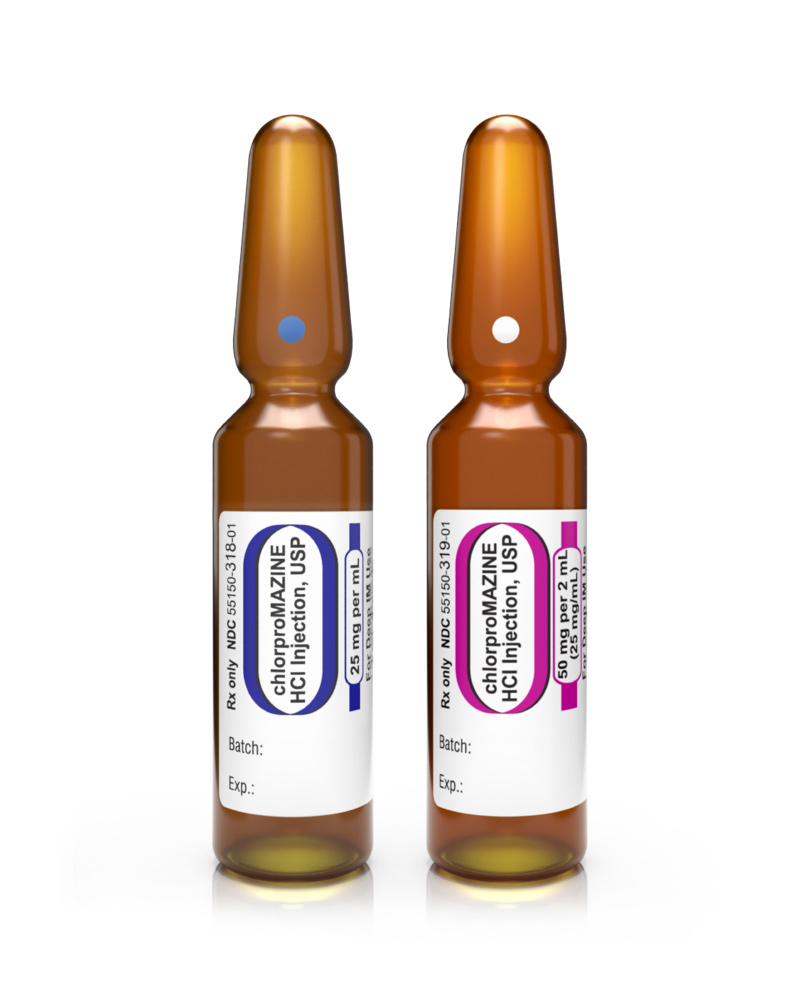
Hyperpyrexia: Causes, symptoms, and treatment
Hyperpyrexia is another term for a very high fever. It usually refers to a body temperature of more than 106.7°F or 41.5°C. Treatment may depend on the underlying cause.
Some doctors lower the measure for hyperpyrexia to include anyone with a body temperature of 106.1°F or 41.1°C and above.
Fevers, including very high fevers, are never illnesses in themselves, or the causes of illnesses. Instead, they are symptoms of other problems, such as an infection or injury. Viral or bacterial infections cause most fevers. However, in hyperpyrexia, that is not always the case.
Hyperpyrexia is an emergency that needs immediate attention from a medical professional.
Contents of this article:
- What is hyperpyrexia?
- Causes of hyperpyrexia
- What are the symptoms?
- Treatment and management
- How is hyperpyrexia diagnosed?
- Outlook
Fast facts on hyperpyrexia:
- Viruses that can cause hyperpyrexia include enterovirus infection, roseola, rubeola, and malaria.

- Hyperpyrexia is associated with a body temperature of more than 106.7°F or 41.5°C.
- Typically, treatment for hyperpyrexia focusses on the underlying disease, if one exists.
- The outlook for hyperpyrexia depends on the underlying condition causing the state of very high fever.
Was this helpful?
Share on PinterestHyperpyrexia can present as an adverse effect of anesthesia.
In hyperpyrexia and most other cases of fever, the brain tells the body to raise its baseline temperature above normal. The body responds to the brain’s messages and raises its temperature to a new baseline. This reaction normally happens as a result of an infection or trauma.
Hyperpyrexia differs from hyperthermia, a medical term for the uncontrolled rise in body temperature due to excess amounts of body heat generated.
In hyperthermia, the brain is not regulating the rise in temperature the way it does with other fevers. Rather, the body cannot handle the heat from environmental causes, and so it overheats.
Cases of heat stroke are due to hyperthermia, and not to hyperpyrexia.
Usually, instances of hyperpyrexia are associated with viral or bacterial infections. Some other causes include the following:
Intracranial hemorrhage
In some cases, bleeding in the brain known as intracranial hemorrhage causes hyperpyrexia. Accidents or other traumas and strokes are the most likely cause of intracranial hemorrhage. The bleeding in the brain can affect an area of the brain called the hypothalamus, which is responsible for regulating the body’s temperature.
Sepsis
In rare cases, hyperpyrexia may result from sepsis. Sepsis is a potentially life-threatening response to an infection caused by the immune system. The overwhelming immune system response gets into the blood, which may cause organ damage or failure.
Anesthesia
People may experience hyperpyrexia due to a direct side effect of general anesthesia, occurring when there is an underlying disease of muscle. In these cases, a person’s temperature rises rapidly while under anesthesia, requiring doctors to make adjustments to lower the body’s temperature again.
In these cases, a person’s temperature rises rapidly while under anesthesia, requiring doctors to make adjustments to lower the body’s temperature again.
Hyperpyrexia in children
Kawasaki syndrome or disease is a potential cause of hyperpyrexia, especially in children. Kawasaki syndrome causes inflammation to the medium-sized arteries throughout the body. One sign of Kawasaki disease is high fever, which can result in hyperpyrexia if left untreated.
Share on PinterestHeadaches can be a sign that a fever is becoming more severe.
Symptoms of hyperpyrexia vary from person to person, depending on how long the condition lasts and if it worsens. Early symptoms may include:
- increased thirst
- extreme sweating
- dizziness
- muscle cramps
- fatigue and weakness
- nausea
- light-headedness
As the high temperature persists or gets worse, the severity of the symptoms can increase. This situation can lead to:
- headache
- contracted pupils
- mild confusion
- pale, moist, and cool skin
- vomiting or upset stomach
- decreased urination or inability to urinate
In prolonged periods of a temperature of more than 106.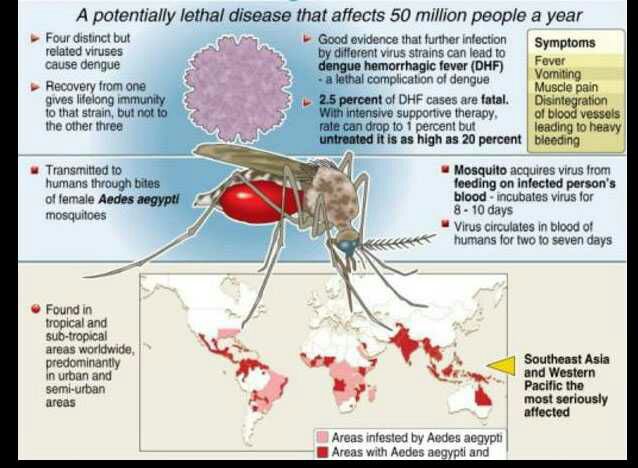 1°F, the following symptoms may occur:
1°F, the following symptoms may occur:
- extreme confusion
- loss of consciousness
- rapid, shallow breathing
- dry, hot, and red skin
- weak, fast pulse
- widened pupils
- seizures
It is essential to seek treatment for fevers over 106.1°F to help prevent serious long-term complications or death.
As hyperpyrexia is caused by another disease, treating the latter will usually cause the body’s temperature to go down.
When the body temperature starts reaching 106.1°F and higher, it may be necessary to treat the fever itself, as well as the underlying cause. Direct treatment of hyperpyrexia may include:
- a cool bath or cold, wet sponges put on the skin
- liquid hydration through IV or from drinking
- fever-reducing medications, such as dantrolene
In cases of malignant hyperpyrexia caused from general anesthesia, doctors will need to take steps to reduce the patient’s fever.
Share on PinterestA thermometer is used to diagnose hyperpyrexia.
Diagnosing hyperpyrexia is done using a thermometer. If the reading is over 106.1°F, then the person has the symptoms of hyperpyrexia.
Since hyperpyrexia itself is not a diagnosis and only a symptom of a larger problem, finding the underlying cause of the high fever is more important and often more challenging.
A doctor will assess the person’s physical state and run tests to rule out the more common causes of high fever. These test may include the following:
- blood work, to check for signs of infection
- image studies of the brain to check for intracranial hemorrhage
Further tests will largely depend on any other symptoms the person has.
If the fever is not treated and a person’s temperature brought down to a safe level, hyperpyrexia can cause permanent brain damage or death.
However, in most circumstances, correct treatments can lower the fever safely, giving doctors time to diagnose and treat the underlying cause of the hyperpyrexia.
Fever: Causes, Treatment, and Prevention
Fever: Causes, Treatment, and Prevention
- Health Conditions
- Featured
- Breast Cancer
- IBD
- Migraine
- Multiple Sclerosis (MS)
- Rheumatoid Arthritis
- Type 2 Diabetes
- Articles
- Acid Reflux
- ADHD
- Allergies
- Alzheimer’s & Dementia
- Bipolar Disorder
- Cancer
- Crohn’s Disease
- Chronic Pain
- Cold & Flu
- COPD
- Depression
- Fibromyalgia
- Heart Disease
- High Cholesterol
- HIV
- Hypertension
- IPF
- Osteoarthritis
- Psoriasis
- Skin Disorders and Care
- STDs
- Featured
- Discover
- Wellness Topics
- Nutrition
- Fitness
- Skin Care
- Sexual Health
- Women’s Health
- Mental Well-Being
- Sleep
- Product Reviews
- Vitamins & Supplements
- Sleep
- Mental Health
- Nutrition
- At-Home Testing
- CBD
- Men’s Health
- Original Series
- Fresh Food Fast
- Diagnosis Diaries
- You’re Not Alone
- Present Tense
- Video Series
- Youth in Focus
- Healthy Harvest
- No More Silence
- Future of Health
- Wellness Topics
- Plan
- Health Challenges
- Mindful Eating
- Sugar Savvy
- Move Your Body
- Gut Health
- Mood Foods
- Align Your Spine
- Find Care
- Primary Care
- Mental Health
- OB-GYN
- Dermatologists
- Neurologists
- Cardiologists
- Orthopedists
- Lifestyle Quizzes
- Weight Management
- Am I Depressed? A Quiz for Teens
- Are You a Workaholic?
- How Well Do You Sleep?
- Tools & Resources
- Health News
- Find a Diet
- Find Healthy Snacks
- Drugs A-Z
- Health A-Z
- Health Challenges
- Connect
- Breast Cancer
- Inflammatory Bowel Disease
- Psoriatic Arthritis
- Migraine
- Multiple Sclerosis
- Psoriasis
Medically reviewed by Cameron White, M.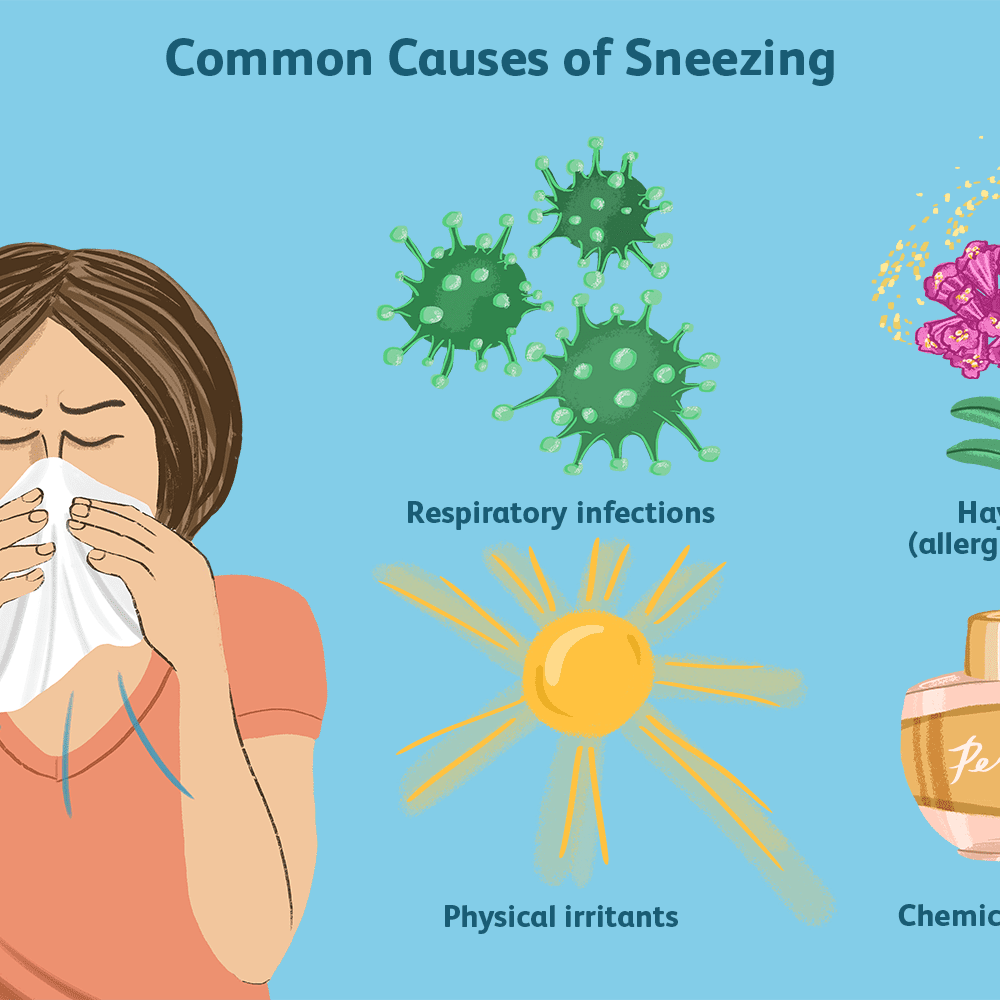 D., MPH — By Krista O’Connell — Updated on July 23, 2019
D., MPH — By Krista O’Connell — Updated on July 23, 2019
We include products we think are useful for our readers. If you buy through links on this page, we may earn a small commission Here’s our process.
Healthline only shows you brands and products that we stand behind.
Our team thoroughly researches and evaluates the recommendations we make on our site. To establish that the product manufacturers addressed safety and efficacy standards, we:
- Evaluate ingredients and composition: Do they have the potential to cause harm?
- Fact-check all health claims: Do they align with the current body of scientific evidence?
- Assess the brand: Does it operate with integrity and adhere to industry best practices?
We do the research so you can find trusted products for your health and wellness.
Read more about our vetting process.
Was this helpful?
Overview
Fever is also known as hyperthermia, pyrexia, or elevated temperature. It describes a body temperature that’s higher than normal. Fever can affect children and adults.
It describes a body temperature that’s higher than normal. Fever can affect children and adults.
A short-term increase in body temperature can help your body fight off illness. However, a severe fever can be a symptom of a serious condition that requires immediate medical attention.
Recognizing a fever can enable you to get treatment and proper monitoring for it. Normal body temperature is typically around 98.6°F (37°C). However, the normal body temperature for each person can vary slightly.
Normal body temperature may also fluctuate depending on the time of day. It tends to be lower in the morning and higher in the late afternoon and evening.
Other factors, such as your menstrual cycle or intense exercise, can also affect body temperature.
To check you or your child’s temperature, you can use an oral, rectal, or axillary thermometer.
An oral thermometer should be placed under the tongue for three minutes.
Shop for oral thermometers.
You may also use an oral thermometer for an axillary, or armpit, reading.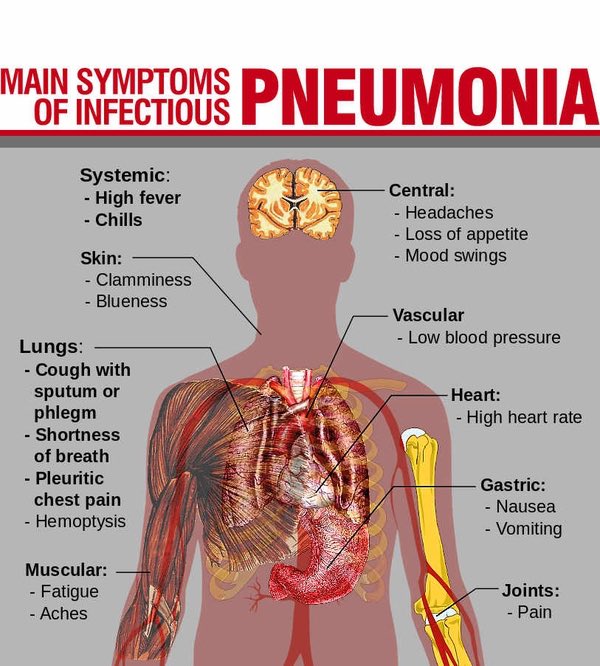 Simply place the thermometer in the armpit and cross your arms or your child’s arms over the chest. Wait four to five minutes before removing the thermometer.
Simply place the thermometer in the armpit and cross your arms or your child’s arms over the chest. Wait four to five minutes before removing the thermometer.
A rectal thermometer may be used for measuring body temperature in infants. To do this:
- Place a small amount of petroleum jelly on the bulb.
- Lay your baby on their stomach and gently insert the thermometer about 1 inch into their rectum.
- Hold the bulb and your baby still for at least three minutes.
Find a selection of rectal thermometers online.
In general, a baby has a fever when their body temperature exceeds 100.4°F (38°C). A child has a fever when their temperature exceeds 99.5°F (37.5°C). An adult has a fever when their temperature exceeds 99–99.5°F (37.2–37.5°C).
Fever occurs when a part of the brain called the hypothalamus shifts the set point of your normal body temperature upward. When this happens, you may feel chilled and add layers of clothing, or you may start shivering to generate more body heat. This eventually results in a higher body temperature.
This eventually results in a higher body temperature.
There are numerous different conditions that can trigger a fever. Some possible causes include:
- infections, including the flu and pneumonia
- some immunizations, such as diphtheria or tetanus (in children)
- teething (in infants)
- some inflammatory diseases, including rheumatoid arthritis (RA) and Crohn’s disease
- blood clots
- extreme sunburn
- food poisoning
- some medications, including antibiotics
Depending on the cause of the fever, additional symptoms may include:
- sweating
- shivering
- headache
- muscle aches
- loss of appetite
- dehydration
- general weakness
Care for a fever depends on its severity. A low-grade fever with no other symptoms doesn’t typically require medical treatment. Drinking fluids and resting in bed are usually enough to fight off a fever.
When a fever is accompanied by mild symptoms, such as general discomfort or dehydration, it can be helpful to treat elevated body temperature by:
- making sure the room temperature where the person is resting is comfortable
- taking a regular bath or a sponge bath using lukewarm water
- taking acetaminophen (Tylenol) or ibuprofen (Advil)
- drinking plenty of fluids
Purchase acetaminophen or ibuprofen online.
A mild fever can typically be treated at home. In some cases, however, a fever can be a symptom of a serious medical condition that requires prompt treatment.
You should take your infant to a doctor if they’re:
- younger than 3 months old and have a temperature exceeding 100.4°F (38°C)
- between 3 and 6 months old, have a temperature over 102°F (38.9°C), and seem unusually irritable, lethargic, or uncomfortable
- between 6 and 24 months old and have a temperature higher than 102°F (38.9°C) that lasts longer than one day
You should take your child to see a doctor if they:
- have a body temperature exceeding 102.2°F (39°C)
- have had a fever for more than three days
- make poor eye contact with you
- seem restless or irritable
- have recently had one or more immunizations
- have a serious medical illness or a compromised immune system
- have recently been in a developing country
You should call your doctor if you:
- have a body temperature exceeding 103°F (39.
 4°C)
4°C) - have had a fever for more than three days
- have a serious medical illness or a compromised immune system
- have recently been in a developing country
You or your child should also see a doctor as soon as possible if a fever is accompanied by any of the following symptoms:
- a severe headache
- throat swelling
- a skin rash, especially if the rash gets worse
- sensitivity to bright light
- a stiff neck and neck pain
- persistent vomiting
- listlessness or irritability
- abdominal pain
- pain when urinating
- muscle weakness
- trouble breathing or chest pain
- confusion
Your doctor will probably perform a physical examination and medical tests. This will help them determine the cause of the fever and an effective course of treatment.
Go to the nearest emergency room or call 911 if you or your child is experiencing any of the following:
- confusion
- an inability to walk
- trouble breathing
- chest pain
- seizures
- hallucinations
- inconsolable crying (in children)
Limiting exposure to infectious agents is one of the best ways to prevent a fever.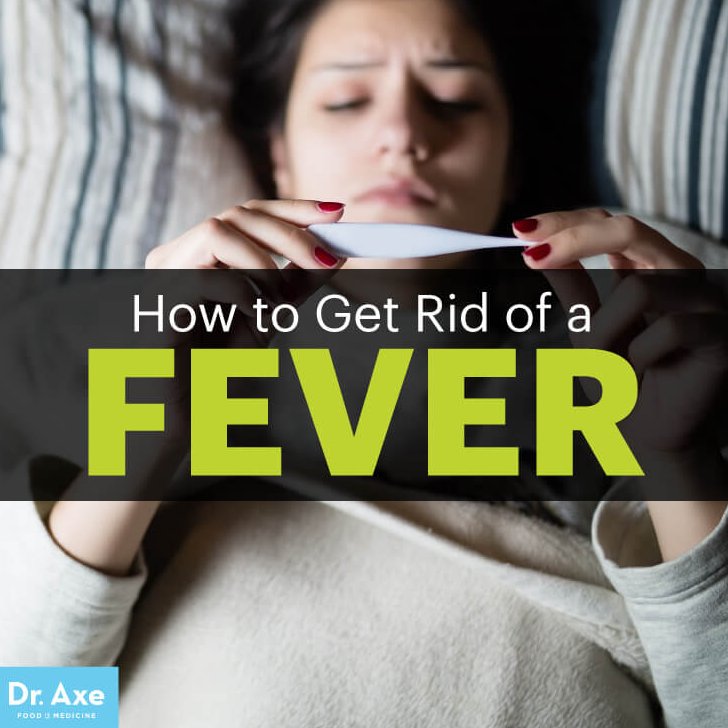 Infectious agents often cause body temperature to rise. Here are some tips that can help reduce your exposure:
Infectious agents often cause body temperature to rise. Here are some tips that can help reduce your exposure:
- Wash your hands often, especially before eating, after using the toilet, and after being around large numbers of people.
- Show your children how to wash their hands properly. Instruct them to cover both the front and back of each hand with soap and rinse thoroughly under warm water.
- Carry hand sanitizer or antibacterial wipes with you. They can come in handy when you don’t have access to soap and water. Find hand sanitizers and antibacterial wipes online.
- Avoid touching your nose, mouth, or eyes. Doing so makes it easier for viruses and bacteria to enter your body and cause infection.
- Cover your mouth when you cough and your nose when you sneeze. Teach your children to do the same.
- Avoid sharing cups, glasses, and eating utensils with other people.
Last medically reviewed on July 18, 2019
How we reviewed this article:
Healthline has strict sourcing guidelines and relies on peer-reviewed studies, academic research institutions, and medical associations. We avoid using tertiary references. You can learn more about how we ensure our content is accurate and current by reading our editorial policy.
We avoid using tertiary references. You can learn more about how we ensure our content is accurate and current by reading our editorial policy.
- Fever in children. (n.d.).
hopkinsmedicine.org/health/conditions-and-diseases/fevers-in-children - Fever in children. (n.d.).
stanfordchildrens.org/en/topic/default?id=fever-in-children-90-P02512 - Lim T. (2015). Kids’ fevers: When to worry, when to relax.
health.clevelandclinic.org/kids-fevers-when-to-worry-when-to-relax/ - Mayo Clinic Staff. (2017). Fever.
mayoclinic.org/diseases-conditions/fever/symptoms-causes/syc-20352759 - Mayo Clinic Staff. (2019). Thermometer basics: Taking your child’s temperature.
mayoclinic.org/healthy-lifestyle/infant-and-toddler-health/in-depth/thermometer/art-20047410
Our experts continually monitor the health and wellness space, and we update our articles when new information becomes available.
Current Version
Jul 23, 2019
Written By
Krista O’Connell
Edited By
Juan Armstrong
Jul 18, 2019
Medically Reviewed By
Cameron White, MD, MPH
Share this article
Medically reviewed by Cameron White, M.D., MPH — By Krista O’Connell — Updated on July 23, 2019
Read this next
- What You Need to Know About Breaking a Fever
Medically reviewed by Angelica Balingit, MD
When should you break a fever, and when should you let it run its course? Here’s everything you need to know about when and how to break a fever.
READ MORE
- 4 Effective Fever Remedies
Medically reviewed by Peggy Pletcher, M.S., R.D., L.D., CDE
READ MORE
- Can Essential Oils Treat the Symptoms of a Fever?
Medically reviewed by Debra Rose Wilson, Ph.D., MSN, R.N., IBCLC, AHN-BC, CHT
Essential oils may help soothe fever symptoms. However, they cannot treat illness alone; you may still need medical attention.

READ MORE
- Children’s Health Symptoms You Shouldn’t Ignore
Medically reviewed by Alana Biggers, M.D., MPH
It’s common for children to have minor colds and growing pains, but some physical symptoms can be a sign of a more serious health condition. Learn…
READ MORE
- Everything You Should Know About Heatstroke
Heatstroke is a serious medical emergency. Learn how to identify the symptoms, what to do if you suspect heatstroke, and tips for prevention.
READ MORE
- What Is a Periodic Fever Syndrome?
Medically reviewed by Carissa Stephens, R.N., CCRN, CPN
Periodic fever syndrome is a group of conditions that cause fevers and other symptoms. These syndromes are more common in kids but can also affect…
READ MORE
- Understanding Familial Mediterranean Fever
Medically reviewed by Stella Bard, MD
Familial Mediterranean fever is an inherited condition that causes episodes of high fever and other symptoms like stomach, chest, and joint pain…
READ MORE
- What Does It Mean if You Are Feeling Feverish but Have No Fever?
Medically reviewed by Meredith Goodwin, MD, FAAFP
If you’re feeling feverish, but not running a temperature, several factors could be at play.

READ MORE
- Triglyceride Level Test
Medically reviewed by Carissa Stephens, R.N., CCRN, CPN
The triglyceride level test is a blood test that helps measure the amount of triglycerides in your blood. Triglycerides are a type of fat.
READ MORE
High temperature in a child: what to do
143180, Russia, Moscow region, Zvenigorod, st. Komarova, 10
+7 (495) 597-73-00
When a child’s body temperature rises, he has a fever, especially if it happens late in the evening or on weekends, when there is no way to call and ask for advice – parents, not knowing what to do, panic. What to do with a fever in a child and what symptoms are really dangerous?
The most common cause of fever is viral infections . Along with this circumstance, the most important thing at high body temperature (above 37.5 ° C), especially in children under 3 months old, is to recognize bacterial infection in time. For this a medical examination of a child under the age of 1 year in the first hours or in the first day of the disease is needed. The smaller the child and the more inexperienced the mother, the sooner.
For this a medical examination of a child under the age of 1 year in the first hours or in the first day of the disease is needed. The smaller the child and the more inexperienced the mother, the sooner.
Warning signs
at high temperature
are:
- repeated vomiting or vomiting of bile
- refusal to eat baby
- long sleep
- inability to wake up
- piercing scream
- pulsating fontanel
- decreased amount of urine
- intercostal retraction
- nodding movements on inspiration, inflation of the wings of the nose during breathing
- grey, very pale or bluish skin color
- for children under 3 months – no eye-to-eye contact (when the child does not fix his gaze on an adult and on an object, avoids fixing his gaze on something).
In these cases, a medical examination is required immediately.
In most cases when the body temperature rises above 38 ° C in a child under 3 months old, if early examination by a doctor and constant communication with a doctor is impossible, hospitalization is indicated .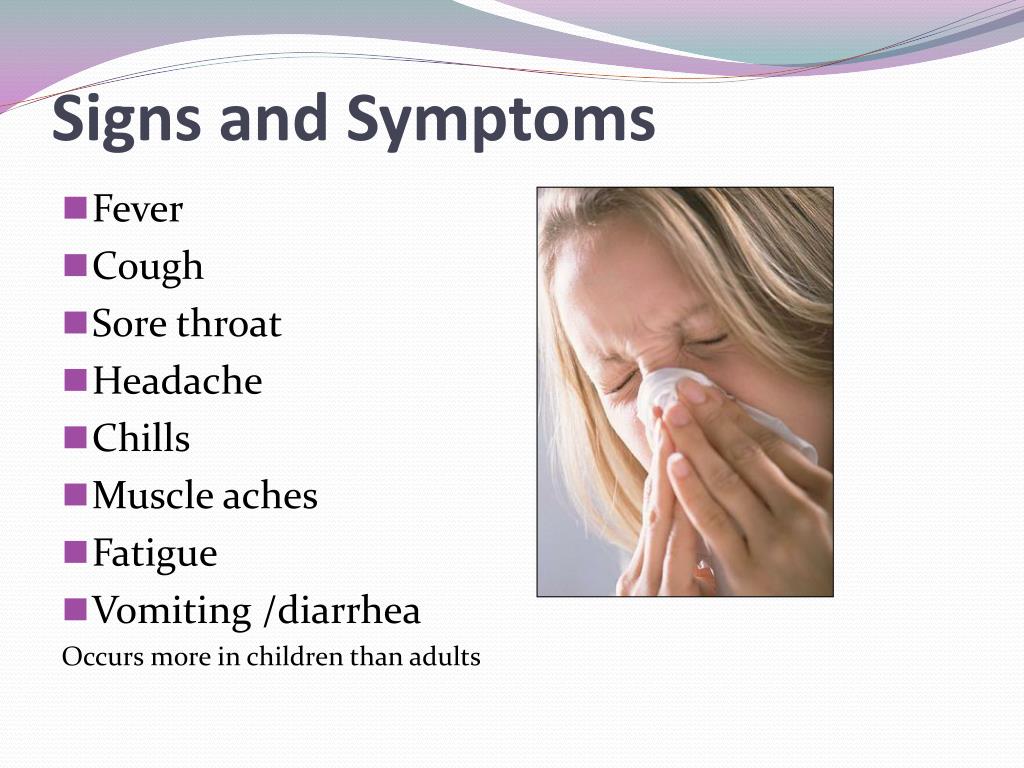
At any age, the indication for hospitalization at high temperature is hemorrhagic rash – a rash in the form of hemorrhage, which does not disappear when pressed.
Tactics to reduce temperature
Tactics to reduce temperature depend on the level of temperature and the age of the child.
Recommended drugs to reduce fever – ibuprofen (nurofen, ibufen), paracetamol (panadol, cefecon). The drug ibuklin junior contains both active ingredients.
Analgin (Metamizole) is not used due to the risk of agranulocytosis (i.e. suppression of white blood cells).
Aspirin (acetylsalicylic acid) is also NOT USED due to the risk of adverse effects on liver function.
If the limbs are hot to the touch, the child should be opened and wiped with water at a temperature of 25-30°C.
If the limbs are icy and the child has chills, this means that in the next few minutes the temperature will still rise , and you need to be alert!
Please note: rubbing with vodka or vinegar is extremely dangerous for children, because may cause skin burns.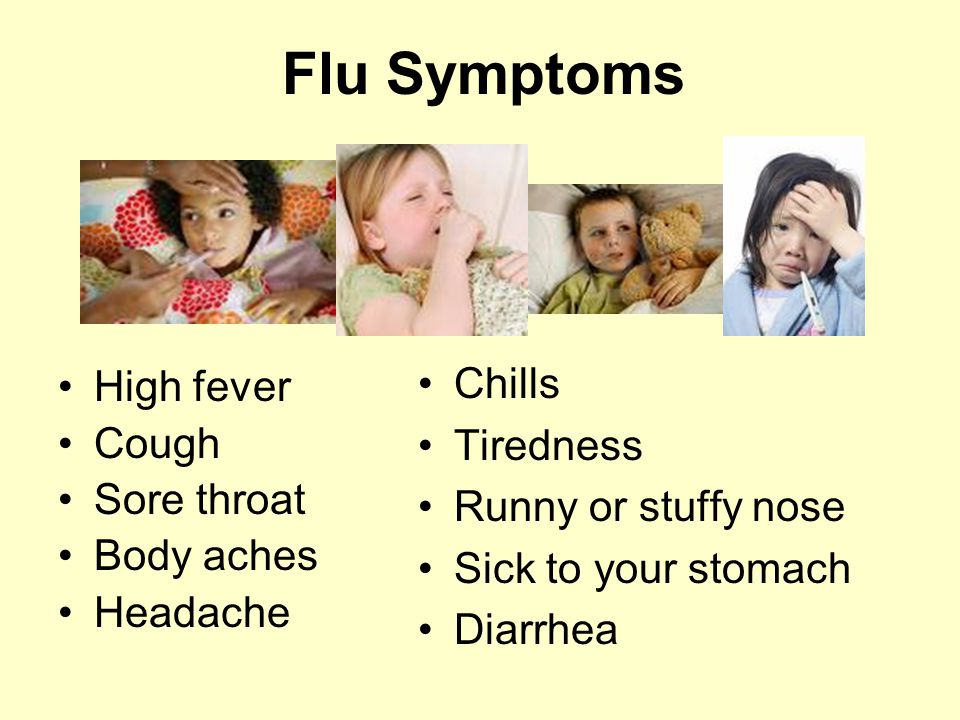
Children should reduce their temperature:
- under 3 months of age above 38°C
- over 3 months – above 39°C.
But it is necessary to take into account the well-being of the child and his neurological status, degree of maturity.
What should be done before the doctor arrives, except for control and lowering body temperature?
A doctor, like a new person, can cause a negative reaction in a child, which will change the clinical picture. Therefore before the doctor arrives, try critically to observe the child , especially if it is a baby.
- Pay attention, how the baby moves his limbs , are there any restrictions in movement, pain when bending or unbending the arms and legs in the joints
- Try to feel all the limbs for pain
- Lightly pull on the ears for resistance to palpation
- Try press the chin against the sternum : whether it comes freely to the sternum
- Examine the entire skin , if possible, the mouth for sores in the mouth or plaque on the tongue
- Monitor and record the time and amount of urine (is it normal)
- Examine feces
- At rest is there noisy and labored breathing .

In case of convulsions or cough, or in any unclear situation, it is better to carry out filming .
What symptoms require an urgent examination by a specialist:
- visible changes on the skin, in the mouth, on the mucous membranes
- soreness on pressure on the tragus of the auricles
- urine or stools of unusual color
- the child does not bring the chin to the sternum
- vomiting present
- abdominal pain.
If there are no life-threatening symptoms, try not to panic , wait for the pediatrician.
Author of the article: c.m.s., pediatrician, nephrologist Faizova L.T.
Hyperthermia
Hyperthermia is an overheating of the human body, which is accompanied by a temperature above 37ºС. Hyperthermia is the most common symptom of various diseases and is a protective and compensatory reaction of the body. Normal human body temperature is about 36.6ºС. Hyperthermia is observed in many diseases, most often observed in acute respiratory viral infections, inflammatory diseases of the upper respiratory tract and respiratory tract. More rare situations are intestinal infections, suppuration of soft tissues, inflammatory diseases of the abdominal organs. At high temperatures, weakness, drowsiness, and sometimes agitation may be noted. Also characteristic symptoms are rapid breathing, tachycardia, sweating.
Normal human body temperature is about 36.6ºС. Hyperthermia is observed in many diseases, most often observed in acute respiratory viral infections, inflammatory diseases of the upper respiratory tract and respiratory tract. More rare situations are intestinal infections, suppuration of soft tissues, inflammatory diseases of the abdominal organs. At high temperatures, weakness, drowsiness, and sometimes agitation may be noted. Also characteristic symptoms are rapid breathing, tachycardia, sweating.
Why do we call hyperthermia a protective-compensatory reaction? When an infectious agent enters the body, various immune processes come to the defense. This is a chain of chemical reactions involving enzymes, their activity is greater at high temperatures. Therefore, if the patient does not have severe background diseases, doctors do not recommend lowering the temperature below 38.5 ºС. With moderate hyperthermia, in this way, it is easier for your body to cope with viruses and bacteria. A completely different situation occurs when the temperature is too high. At the same time, such a protective, in fact, process can harm your body. To prevent this from happening, too high a temperature should be reduced.
A completely different situation occurs when the temperature is too high. At the same time, such a protective, in fact, process can harm your body. To prevent this from happening, too high a temperature should be reduced.
How to do it? First of all, it is necessary to use physical methods of cooling, for this, fresh air must be provided in the room where the patient is located. Rubdowns are possible, using cool mixtures containing water and vinegar. You can make cool compresses and apply them to areas where large vessels pass, such as the neck, armpits and groin. It is categorically impossible to wrap the patient with a large number of warm things (blankets, clothes). It is illogical to apply warm compresses for hyperthermia or give very hot drinks ─ they contribute to overheating.
Of course, the easiest way is to drink an antipyretic. And we use it often. At any age, preference should be given to Paracetamol. It is better than multicomponent drugs such as Coldrex, Theraflu.


 4°C)
4°C)

